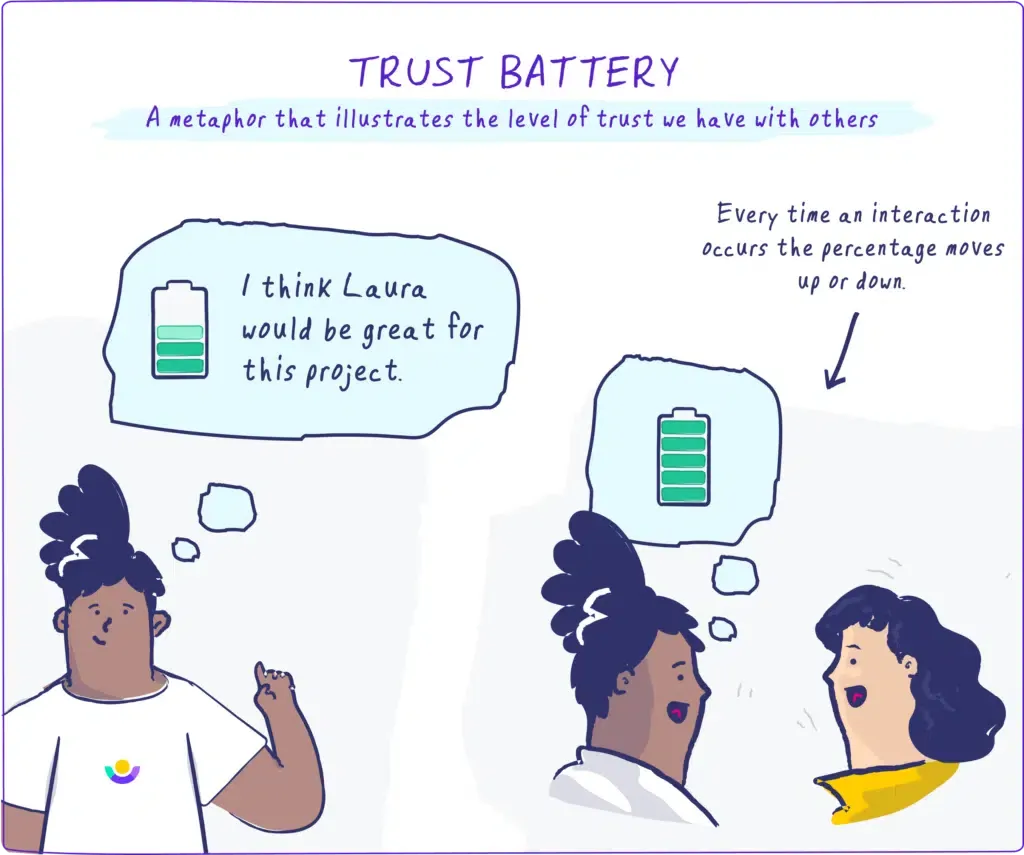Psychological safety: What we can learn from people-first companies
How can you create a workplace where team members know that it's okay to ask questions, voice concerns, and admit to mistakes? If you're looking to invest in your team's psychological safety, here's how to get started.

Everyone wants it, but certainly not all teams provide it: an environment in which team members feel comfortable to speak up, disagree, and take moderate risks. A space where you can stick your neck out without fear of having it cut off. In other words, a workplace where you can feel psychologically safe. Psychological safety is present when your team members trust and respect each other so much that candid conversations are a standard, as nobody fears punishment for openly speaking their mind.
Psychological safety is good for your humans—and good for your business
Psychological safety matters most when doing creative, novel, or collaborative work—the kind of work many of us do every day. And it brings only the good things:
- Teams that feel psychologically safe are more effective. Psychological safety is one of the strongest proven predictors of team effectiveness. When Google went on a quest to find out what makes a perfect team, they found that what really mattered for team effectiveness was less about who was on the team than how the team worked together. Psychological safety was the most important factor.
- Psychological safety supports employee mental health:
Individuals experiencing psychological safety at work are less likely to experience burnout. - Psychological safety is the foundation for unlocking the power of diversity: A recent study suggests that psychological safety helps teams realize the potential of diversity for both performance and well-being.
Fostering psychological safety with your teams
If you’re looking to build a people-first workplace that keeps your team happy, healthy, and effective, you’ll have to optimize for psychological safety. But as Amy Edmondson, the Harvard professor who coined the term in 1999, puts it: psychological safety is “more magic than science” and continuously needs to be co-created and nurtured. But how exactly do you do that? We pooled some insights from the people-first community and beyond that might inspire you as you continue investing in your team’s psychological safety:
Assess how psychologically safe your team feels today
The first step to promoting psychological safety is finding out how much (or how little) of it is present within your team today. Our friends at Parabol suggest some powerful questions leaders can ask and behaviors to look out for to assess if they have psychological safety in their organization, for example: “Do people regularly admit if they don’t know something and ask for help?” or “Do people speak openly (and happily) about the company’s culture and values?” Those behaviors can be an indicator of a psychologically safe workplace. But what if you’re spotting behaviors that are the opposite of that? If your team members shy away from asking critical questions or if they distance themselves from mistakes (or even put the responsibility for any issues on others), don’t fall into the trap of blaming individual team members for these behaviors. More often, they’re symptoms that indicate a lack of psychological safety.
Design safe spaces for (personal) exchange
Creating psychological safety starts with the right mindset and grows through actions and practices. A good starting point is the daily interactions within your team—be it in team meetings, 1:1s, or Slack channels. It sounds simple, but starting a team meeting with a check-in that gives everyone a voice, not putting people on the spot, and thanking team members for their contributions (especially when they’re challenging your own) already goes a long way.
Trust and psychological safety are closely intertwined. Customer.io describes how their team works on “trust batteries.” The idea is simple: The trust battery is a metaphor to help visualize trust levels—the fuller the battery is, the better. It illustrates the level of trust we have with others and the “load” changes with every interaction. Customer.io developed several practices to (re)charge their team members’ trust batteries, including donut chats, virtual events, and company retreats—all of which are designed for the team to talk about topics other than work and to build and nurture human connections that are the foundation of a trusting work environment.

If your team is struggling with sharing failures, consider hosting a session that’s dedicated to providing a safe space to do just that. You can start in a smaller setting with a few team members to practice the art and help your team gain confidence. If that’s a success, you could even host a company-wide session with the whole purpose to share stories of failure, celebrate these mistakes, and learn from them.
Teach your team how to disagree and how to give and receive feedback in a mindful way
According to Amy Edmondson, a common misunderstanding about psychological safety is that “too many people think that it’s about feeling comfortable all the time and that you can’t say anything that makes someone else uncomfortable or you’re violating psychological safety.” But as many of us have experienced, learning, getting things wrong, and giving and receiving candid feedback can be quite uncomfortable. The advantage of a psychologically safe environment is that you can do these things without fearing negative interpersonal consequences.
Being open and honest with each other needs to be practiced. Alley has subscribed to the concept of Radical Candor: “This means that we strive to challenge each other directly because we care deeply for each other, our work, and Alley as a whole.” To get newbies off on the right foot, they have incorporated Radical Candor into their onboarding and training materials, offering a framework for delivering empathetic feedback without falling short of being direct and constructive.
Disagreement is an opportunity to build trust, respect, and mutual understanding. If your team isn’t disagreeing, there’s a good chance you have a different kind of problem on your hands.
~Jeremey DuVall on the todoist blog
Should you now be looking for some hands-on advice on how to disagree with your coworkers, doist has you covered. Finding a way to disagree without shutting down the conversation or angering the other side can be difficult. Jeremey offers five steps to get there: set your pride aside, maintain perspective on what’s really important, genuinely listen to the other side, do the work to have an opinion, and frame your point of view inclusively, not combatively.
Lead by example—and don’t be afraid to show vulnerability
From a leadership perspective, psychological safety is all about walking the talk. Team members will feel confident to do what leaders showcase, knowing there won’t be negative consequences.
When you, as a leader, model vulnerability, you “open the door for people with less formalized power to safely emulate your behavior.” Janice Omadeke describes two starting points: First, be honest about your struggles. The more leaders are honest about struggling with a task or asking for help, the safer team members will feel to do the same. Second, stand up for your values and beliefs, even when others are hesitant. This can take the shape of introducing your pronouns in a group setting, sharing how you feel about a scary event in the news, or admitting that you find a project at work challenging.
Know Your Team surveyed almost 600 managers and employees about the best ways to build trust as a leader. Perhaps surprisingly, they find that company retreats and team-building activities, thanking your team and giving recognition, and being transparent with company info were the least effective ways to build trust as a leader. What was #1? Showing vulnerability.
Being vulnerable with your weaknesses and mistakes demonstrates empathy—and the more empathetic someone is, the more likely we are to trust them.
~ Claire Lew, CEO of Know Your Team
Remember that psychological safety makes your day-to-day life easier
If you get things right, psychological safety will enable your team to produce better results and will also make your day-to-day at work easier. Virginia from Help Scout writes about why psychological safety is a must-have for successful delegation (make sure to check out her great decision tree!). When you ask a coworker to take something off your plate that they’ve never done before, they might feel a risk of failing and be hesitant. If they know it’s OK to ask for support or not to get it completely right the first time, they’ll be more likely to try.
The bottom line: It’s worth it!
Psychological safety looks different in every team and will mean different things to each team member. So while there’s no one-size-fits-all approach to building psychological safety in your team, it’s a smart investment. It’ll make your team—and your business—more effective, healthy, and fun.
Do you have any additional tips for creating psychological safety within your team? Or have you ever worked with a leader who mastered the art of creating truly safe workplaces? We’d love to hear your stories.
The best people-first content, delivered to your inbox
Learn from people-first leaders and get tips and advice for how to build a work environment that keeps your team happy and healthy. We curate the best people-first content, and deliver it straight to your inbox.
